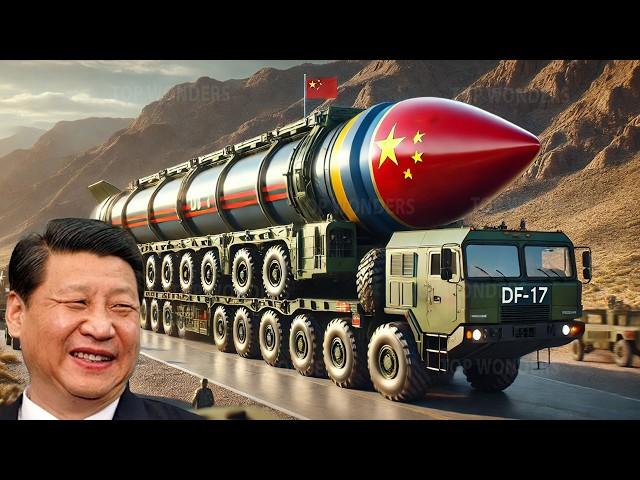In the world of ever-evolving military technology, China’s DF-17 hypersonic missile has emerged as a formidable force to be reckoned with. With the ability to travel at speeds of Mach 10, questions have arisen about whether this advanced weapon system could potentially be used to destroy aircraft carriers. This article will delve into the capabilities of the DF-17 and explore the potential implications of its use in modern warfare.
– The Implications of Chinas DF-17 Hypersonic Missile on Aircraft Carriers
China’s DF-17 Hypersonic Missile has sparked significant concern among military experts regarding its potential threat to aircraft carriers. Traveling at an astonishing speed of Mach 10, this missile poses a formidable challenge to traditional defense systems.
The implications of the DF-17 Hypersonic Missile on aircraft carriers are vast and alarming:
- Unprecedented Speed: The DF-17’s Mach 10 speed makes it incredibly difficult for current defense systems to intercept, putting aircraft carriers at risk.
- Enhanced Precision: The hypersonic nature of the missile allows for greater accuracy in targeting, increasing the likelihood of successfully hitting a moving aircraft carrier.
- Reduced Response Time: With its rapid speed, the DF-17 significantly reduces the time available for countermeasures, making it a potent threat to carriers.
– Analyzing the Speed and Accuracy of Mach 10 Missiles
The DF-17 Hypersonic Missile developed by China has been making headlines due to its incredible speed and accuracy, traveling at Mach 10. But can this advanced weapon system truly pose a threat to aircraft carriers?
With its speed of Mach 10, the DF-17 missile is capable of covering vast distances in a very short amount of time, making it difficult for traditional defense systems to intercept. Its hypersonic capabilities also make it highly maneuverable, further increasing its evasiveness. These factors combined could potentially enable the DF-17 to bypass the defenses of aircraft carriers, posing a significant threat to these naval assets.
– Evaluating Defense Strategies Against Hypersonic Missile Threats
China’s DF-17 hypersonic missile has been a topic of concern for military experts worldwide. With the ability to travel at Mach 10, this missile poses a significant threat to naval assets, including aircraft carriers. The question on everyone’s mind is whether the DF-17 is capable of destroying carriers with its hypersonic speed.
One of the key defense strategies against hypersonic missile threats like the DF-17 is the development of advanced missile defense systems. These systems, such as the Aegis Ballistic Missile Defense System, are designed to track and intercept incoming missiles in real-time. Another crucial aspect of defense against hypersonic missiles is the use of electronic warfare capabilities, which can disrupt and disable the guidance systems of these high-speed projectiles. a multi-layered approach combining advanced missile defense systems and electronic warfare is essential for countering the threat posed by hypersonic missiles like the DF-17.
Concluding Remarks
the development of China’s DF-17 hypersonic missile poses a potential threat to aircraft carriers due to its ability to travel at incredible speeds. While the exact capabilities and effectiveness of this weapon remain uncertain, it is clear that advancements in missile technology have the potential to shift the balance of power in the naval domain. As military innovation continues to evolve, it is crucial for defense experts to closely monitor and analyze the implications of hypersonic missile technology on maritime security. The future role of hypersonic weapons in naval warfare is still unfolding, and only time will tell how this game-changing technology will shape the global military landscape.
